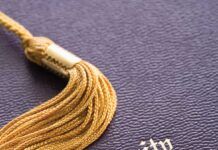I’m not one for jumping on the bandwagon and weighing in right away on some current “hot” topic. Stirring the pot after things have subsided is what I like best; having people revisit something the media put forth in a big splash, and then forgot.
This brings me to the feel-good gun buyback baloney that happened last month and made almost everyone except me feel warm and fuzzy. To refresh your memory, a politician back east, or somewhere, thought we needed fewer guns in our society.
That forward-thinking pol instituted a “no questions asked” way to turn in guns to get those horrible instruments destroyed.
A Chula Vista council member copycatted the idea and the buyback became a local reality. People could receive a gift card worth $50 if they turned in a gun, even one they might have just stolen, or used to shoot someone
Coincidentally, the South Bay cities held their grand event the same weekend a gun show opened at the Fairgrounds in Del Mar. What made ol’ cynical me laugh is that the local police departments collected less than 100 guns at the South Bay Regional Center while thousands of gun enthusiasts flocked to the fairgrounds, lining up to gain admittance to buy guns and ammunition.
What bothered me about the “no questions asked” policy is that someone could turn in a firearm for destruction that might have been stolen, or used in a homicide or attempted murder. Many people don’t realize that when a shooting happens, the authorities keep the spent bullet and cartridge if either item is recovered. The authorities catalog the bullet image and record the ballistic markings much the same way fingerprints and dental records are saved in a database.
Participating police agencies turn the information in to the National Integrated Ballistic Information Network (NIBIN). This organization makes digital images from the markings on the bullets and cartridge cases. The impressions are stored in the Integrated Ballistic Identification System (IBIS).
If an expended bullet or cartridge recovered from a shooting victim or a crime scene matches a previously cataloged expended bullet or cartridge, the submitting agency is notified. If a firearm suspected of being used in a crime is located, the agency will perform a test fire and submit the expended bullet and casing into the NIBIN. By employing this method, links are rapidly made between guns, bullets, crimes, and hopefully people associated with the crimes.
However, if the gun buyback program destroys the firearms and no questions are asked of the person turning in the gun, valuable evidence could be lost. Not only is the gun lost, no one even knows who turned it in. No serial numbers are recorded.
If someone stole a gun from you and you reported it and someone turned your gun in at the buyback, the gun would be destroyed and you would never know it passed through police hands.
Lt. Roxana Kennedy said most of the guns appeared to come from elderly people who had unwanted guns around the house and didn’t know where or how to get rid of them.
National City Police Chief Adolfo Gonzales, who would be leaving soon to be the chief investigator at the DA’s office, said that thieves break into homes, steal guns and then commit other crimes. He added that keeping guns out of criminal hands is a good community service. He really didn’t need to add that. We somehow already knew it.
So, when all is said and done, this civic proactive project made us feel safer. It didn’t really make us safer, but only made us think we were safer. Me excluded.











